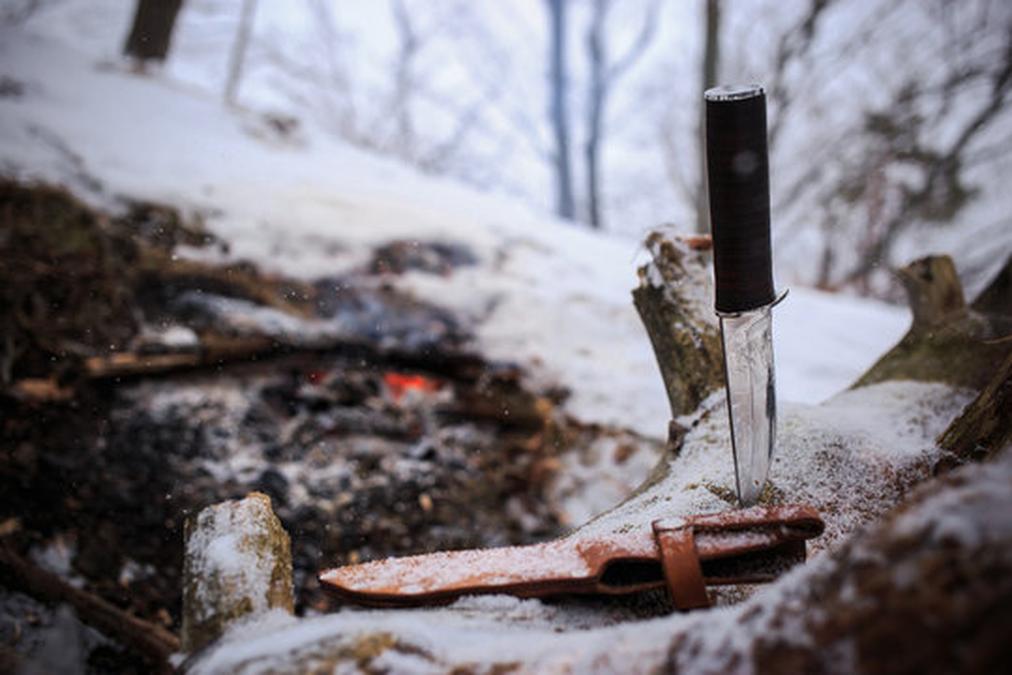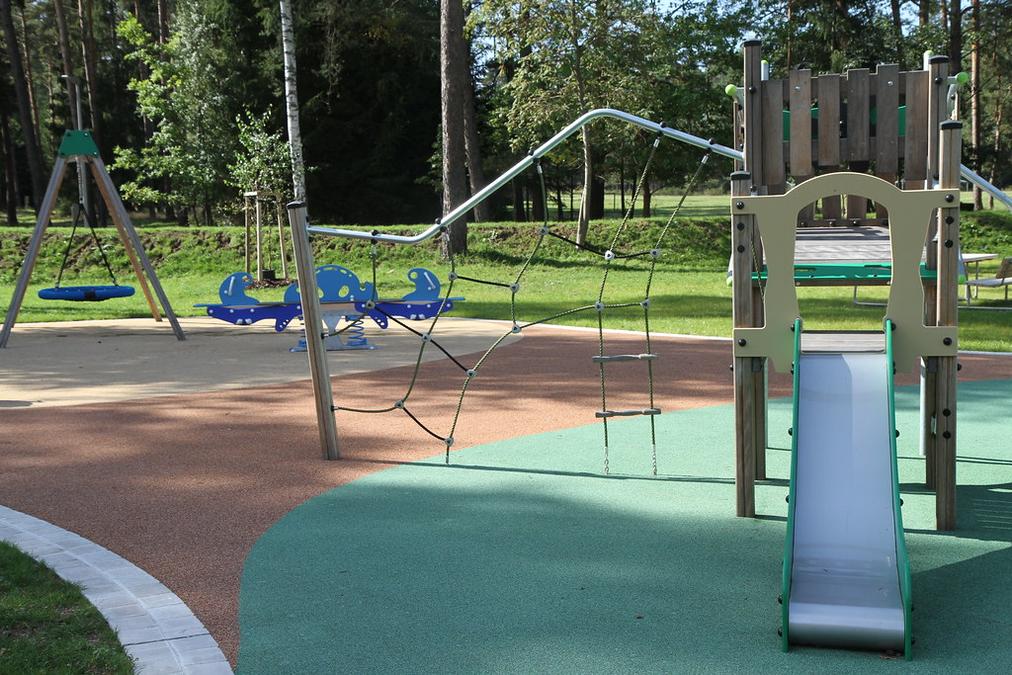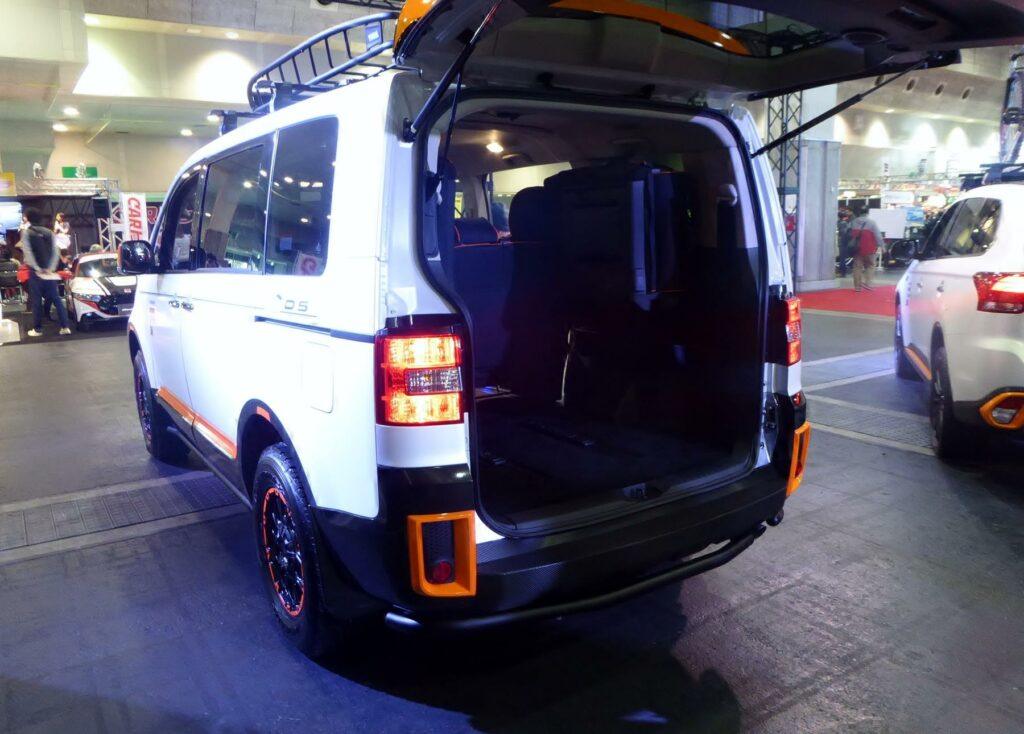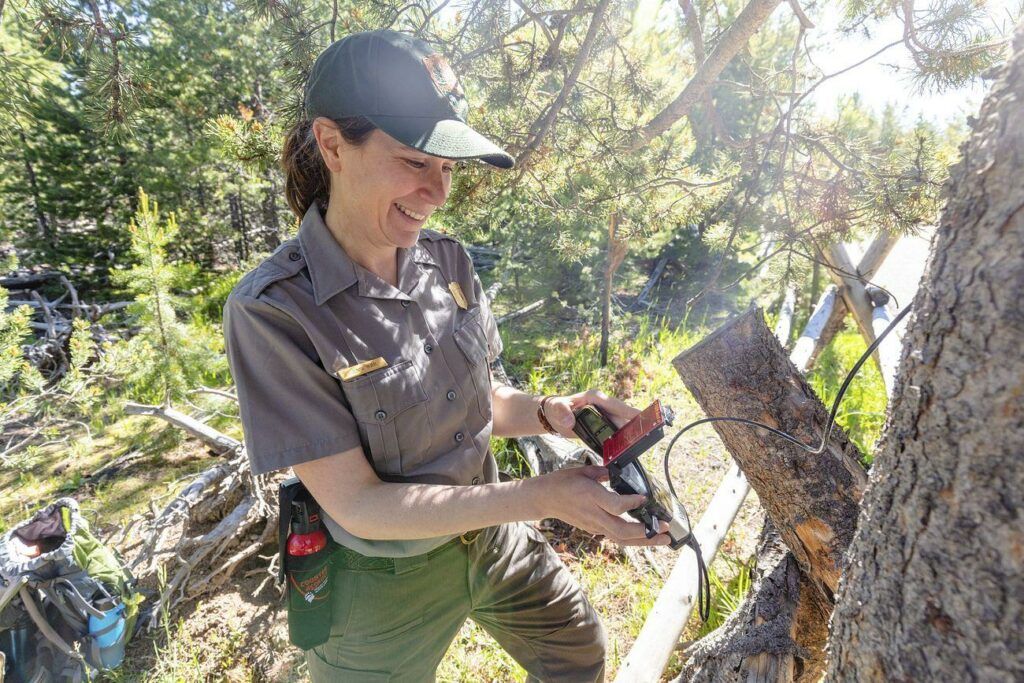Understanding the Importance of Outdoor Survival Gear Essentials
When venturing into the great outdoors, having the right gear can mean the difference between a safe and enjoyable adventure or a potentially dangerous situation. That’s why it’s crucial to understand the importance of outdoor survival gear essentials. In this section, we will explore the significance of being well-prepared and highlight the need for proper education and training.
Being Prepared for the Unexpected
Nature can be unpredictable, and outdoor enthusiasts must be ready for any situation. Whether it’s a sudden change in weather conditions, getting lost in unfamiliar terrain, or encountering wildlife, having the right gear can provide a sense of security and increase your chances of survival. By equipping yourself with the necessary tools, you’ll be better prepared to handle unexpected challenges that may arise during your outdoor excursions.
Considering the Scenario
Each outdoor adventure presents unique challenges and requirements. The gear you need for a day hike in a local park may differ from what you would pack for an extended backpacking trip in the wilderness. It’s essential to consider the specific scenario you’ll be facing when choosing your gear. Factors such as location, climate, and the duration of your trip should all be taken into account. By tailoring your gear to the specific demands of your adventure, you can ensure that you are adequately prepared for the challenges ahead.
The Importance of Education and Training
Even the best gear is useless without the knowledge and skills to use it effectively. Before embarking on any outdoor adventure, it’s highly recommended to seek education and training in wilderness survival. By taking classes from experienced instructors, you can learn valuable techniques and gain the confidence needed to handle various situations. The Wilderness College, for example, offers courses and resources to help outdoor enthusiasts enhance their survival skills[^1].
Remember, when it comes to outdoor survival, knowledge is power. Investing in education and training will not only make you more proficient in using your gear but also provide you with the essential skills to navigate and survive in the wilderness.
[^1]: Wilderness College – Survival Gear List
Survival Gear Recommendations from Wilderness Experts
When it comes to outdoor survival gear essentials, it’s invaluable to look to the advice and recommendations of wilderness experts. In this section, we will explore gear suggestions from reputable sources such as Wilderness College and Brunton. These recommendations will help ensure that you have the necessary tools to navigate and thrive in the wilderness.
Wilderness College’s Recommended Gear List
According to the experts at Wilderness College[^1], creating a comprehensive survival gear list involves considering the specific scenario and ensuring familiarity with all items. Their recommendations are tailored for both short and extended survival situations. Here are some key items they suggest:
- Map: A topographic map of the area you’ll be exploring is essential for navigation and planning.
- First-Aid Kit: A well-stocked first-aid kit is crucial for treating injuries and addressing medical emergencies.
- Fire Starter: Reliable fire starters, such as waterproof matches or a ferrocerium rod, are vital for warmth, cooking, and signaling for help.
- Water Purification System: Having a reliable water purification system, such as a portable water filter or purification tablets, ensures access to clean drinking water.
- Knife: A sturdy and versatile knife is a must-have tool for various tasks, including shelter building, food preparation, and self-defense.
- Cordage: Strong and lightweight cordage, such as paracord, can be used for setting up shelters, creating traps, and many other purposes.
- Fishing Gear: Including a compact fishing kit can provide an additional food source in survival situations near bodies of water.
- Flashlight: A reliable flashlight or headlamp with extra batteries helps navigate in low-light conditions and can be used for signaling.
- Solar Blanket: A lightweight, compact solar blanket can provide insulation and help retain body heat in emergency situations.
These are just a few examples of the essential gear items recommended by Wilderness College. It’s important to evaluate your specific needs and consider additional factors such as weather conditions and the duration of your trip before finalizing your survival gear list.
Wilderness Survival Kit Essentials from Brunton
Brunton, a trusted name in outdoor gear, also offers valuable insights into creating a wilderness survival kit[^2]. Their recommendations emphasize the importance of being prepared for unexpected situations. Here are some key items they suggest:
- Navigation Tools: In addition to a map, include a compass and a GPS device to help guide you during your outdoor adventures.
- First-Aid Essentials: Ensure your first-aid kit is well-stocked with bandages, antiseptic wipes, pain relievers, and other necessary medical supplies.
- Fire-Starting Tools: Along with waterproof matches or a lighter, consider including a reliable fire starter like a magnesium fire starter or a fire striker.
- Water Filtration System: Include a water filter or water purification tablets to ensure access to safe drinking water.
- Knife or Multi-Tool: A versatile tool like a survival knife or multi-tool can be invaluable for various tasks.
- Cordage and Duct Tape: Pack some paracord or durable cordage and a roll of duct tape for repairs, shelter building, and other purposes.
- Fishing Kit: Consider including fishing gear like hooks, fishing line, and small lures to supplement your food supplies.
- Flashlight or Headlamp: A reliable light source is essential for navigating in the dark and signaling for help.
These recommendations from Brunton serve as a valuable starting point for assembling your wilderness survival kit. Remember to personalize your kit based on your specific needs, the environment you’ll be in, and the duration of your adventure.
^1]: [Wilderness College – Survival Gear List
[^2]: Brunton – 10 Items to Add to Your Wilderness Survival Kit
Survival Tips from the Experts at The Survival University
When it comes to outdoor survival, the experts at The Survival University[^3] in Colorado have valuable insights to share. In this section, we will explore their survival tips and recommended gear list. Whether you’re a seasoned adventurer or new to the wilderness, their advice can help enhance your preparedness and survival skills.
Dressing Appropriately for Cold Weather
When venturing into cold climates, it’s crucial to dress appropriately to protect yourself from the elements. The Survival University suggests the following:
- Layering: Dress in multiple layers to trap heat and regulate body temperature. This includes a base layer, insulating layer, and outer shell.
- Insulation: Choose insulating materials like fleece or wool to keep you warm even when wet.
- Protective Outerwear: Wear a waterproof and windproof outer shell to shield yourself from rain, snow, and wind.
- Head and Hand Protection: Don’t forget to wear a hat, gloves, and warm socks to protect extremities susceptible to frostbite.
Sun Protection and Eyewear
It’s important to protect yourself from the sun’s harmful rays, even in the wilderness. The Survival University recommends the following:
- Sunscreen: Apply sunscreen with a high SPF to exposed skin, even on cloudy days.
- UV Protective Sunglasses: Wear sunglasses that provide UV protection to shield your eyes from harmful rays and glare.
The Survival University’s Flexible Recommended Gear List
The Survival University understands that not everyone has access to an extensive array of outdoor gear. Their flexible approach to gear allows attendees to bring as much or as little as they have. Here are some examples of gear they suggest:
- Fire Starter: Carry a reliable fire starter to help with warmth, cooking, and signaling for help.
- Water Container: Ensure you have a container for carrying and storing water.
- Knife or Multi-Tool: Pack a versatile tool for various tasks such as shelter building and food preparation.
- Illumination: Include a reliable flashlight or headlamp with extra batteries.
- First Aid Kit: Bring a well-stocked first aid kit to address any medical emergencies.
The Survival University believes that survival skills are more important than the gear itself. They encourage individuals to focus on learning and acquiring essential skills before investing heavily in gear.
Remember, survival gear is only as effective as the knowledge and skills you possess. By taking the time to educate yourself and practice wilderness survival techniques, you’ll be better equipped to handle any situation that may arise.
[^3]: The Survival University – Recommended Gear List
Building Your Personalized Survival Kit
Creating a personalized survival kit is essential to ensure you have the necessary tools and supplies tailored to your specific needs. In this section, we will explore a checklist for building your own survival kit, taking into consideration various factors such as location, medical conditions, and personal preferences.
Basic Supplies for Your Survival Kit
Start by including the following basic supplies in your survival kit:
- Tools: Pack a multi-tool or a sturdy knife that can serve multiple purposes.
- Illumination: Include a reliable flashlight or headlamp with extra batteries.
- Clean Water: Carry a water bottle or water bladder with a built-in filtration system.
- Cordage and Tape: Bring some paracord or durable cordage along with duct tape for various purposes.
- Fire-Starting Kit: Include waterproof matches, a lighter, or a fire starter for warmth, cooking, and signaling.
- First Aid Supplies: Pack a well-stocked first aid kit with bandages, antiseptic wipes, pain relievers, and any necessary medications.
- Rescue Signals: Include a whistle, signal mirror, or other signaling devices to attract attention in case of emergency.
Customizing Your Survival Kit
To personalize your survival kit, consider the following factors:
- Location: Take into account the specific environment and terrain you’ll be exploring. If you’re heading into a cold climate, include additional cold-weather gear and insulation. For desert environments, pack extra water and sun protection.
- Medical Conditions: If you have any specific medical conditions, ensure you have the necessary medications and supplies to manage them. Consider including allergy medication, asthma inhalers, or any other required treatments.
- Self-Defense: Depending on the region and potential risks you may encounter, consider including personal defense items such as pepper spray or a personal alarm.
- Communication: In remote areas, it’s essential to have a reliable means of communication. Consider bringing a satellite phone, a two-way radio, or a personal locator beacon (PLB) to call for help if needed.
- Additional Items: Think about any additional items that may be relevant to your specific needs. This could include cash, extra clothing, emergency shelter, navigation tools, or specific gear for your planned activities (e.g., climbing equipment, fishing gear).
Choosing an Efficient Container
Selecting the right container for your survival kit is crucial. Look for a durable, waterproof, and lightweight container that can easily fit all your gear. Options include dry bags, waterproof containers, or sturdy backpacks with compartments to keep your items organized.
Remember to regularly review and update your survival kit as needed. Check the expiration dates of perishable items, replace used supplies, and ensure that your gear is in good working condition.
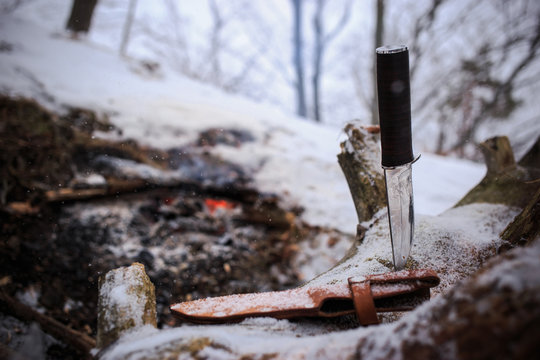
Must-Have Wilderness Survival Tools
When venturing into the backcountry, having the right tools can make a significant difference in your survival and overall experience. In this section, we will explore 14 essential wilderness survival tools that should be part of your gear arsenal.
1. Fire Starter
A reliable fire starter is crucial for warmth, cooking, and signaling. Consider carrying waterproof matches, a lighter, or a fire starter kit that can easily ignite tinder even in wet conditions.
2. Survival Knife/Multi-Tool
A high-quality survival knife or multi-tool is a versatile tool that can assist with shelter building, food preparation, and various other tasks. Look for a sturdy blade, essential tools like a can opener and screwdriver, and a comfortable grip.
3. Topographic Map and Compass
Navigational tools are essential for wilderness exploration. Carry a detailed topographic map of the area you’ll be exploring and a reliable compass to help you find your way and avoid getting lost.
4. First Aid Kit
A well-stocked first aid kit is a must-have for any outdoor adventure. Make sure it includes bandages, antiseptic wipes, pain relievers, adhesive tape, and any necessary medications.
5. Emergency Survival Whistle
An emergency survival whistle can be a lifesaver in critical situations. It can help you attract attention and signal for help if you’re lost or in need of assistance.
6. Paracord
Paracord is a versatile and strong cordage that can serve multiple purposes in a survival scenario. Use it for setting up shelters, securing gear, or creating makeshift tools.
7. Water Filtration System
Access to clean drinking water is crucial for survival. Carry a reliable water filtration system or water purification tablets to ensure you can safely drink water from natural sources.
8. Flashlight/Headlamp
A reliable flashlight or headlamp is essential for illuminating your surroundings during low-light situations. Don’t forget to pack extra batteries to ensure extended use.
9. Tarp
A lightweight tarp can provide shelter from the elements, protect your gear, and serve as a ground cover. Look for a durable and waterproof tarp that can withstand harsh conditions.
10. Signal Mirror
A signal mirror can help you attract attention and signal for help in emergency situations. It reflects sunlight to create a visible signal that can be seen from a distance.
11. Space Blanket
A space blanket, also known as an emergency blanket, is a lightweight and compact item that provides insulation and reflects your body heat back to you. It can help prevent hypothermia and is an essential addition to your survival kit.
12. SPOT Locator
A SPOT locator or similar satellite communication device can be a vital tool for emergency situations. It allows you to send a distress signal and notify emergency services of your location when there is no cell phone coverage.
13. Dry Bag/Ursack
Protecting your gear and food from water and wildlife is crucial. A dry bag or Ursack offers waterproof storage for your belongings and can help keep them safe from curious animals.
14. Multifunctional Tool
In addition to a survival knife, consider carrying a multifunctional tool that includes features like pliers, wire cutters, a saw, and more. It can come in handy for various tasks and repairs.
By including these essential wilderness survival tools in your pack, you’ll be better prepared to handle unexpected situations and ensure a safer and more enjoyable outdoor adventure.
Discover a World of Adventure with Camping Gear Pros
Congratulations! You are now equipped with valuable knowledge about outdoor survival gear essentials. Remember, preparation is key to enjoying a safe and successful adventure in the wilderness. At Camping Gear Pros, we strive to provide you with the best gear and resources to enhance your outdoor experiences.
Explore Our Extensive Gear Selection
At Camping Gear Pros, we offer a wide range of high-quality outdoor gear and equipment that is essential for your next wilderness adventure. Whether you’re looking for reliable tents, durable backpacks, efficient water filtration systems, or versatile multi-tools, we have you covered. Visit our website here to explore our extensive gear selection and find the perfect tools to accompany you on your outdoor escapades.
Dive into Our Informative Blog
In addition to our gear offerings, we also provide a wealth of knowledge and insights through our informative blog. Our blog covers a variety of topics related to outdoor survival, camping tips, gear reviews, and more. We regularly update our blog with new content to keep you informed and inspired for your next adventure. Check out our blog here to dive deeper into the world of outdoor exploration.
Join Our Outdoor Community
At Camping Gear Pros, we believe that the outdoor community is a valuable source of inspiration and knowledge. Connect with fellow outdoor enthusiasts, share your experiences, and learn from others by joining our vibrant outdoor community. Visit our website here to become a part of our community and embark on a journey of shared adventures.
Conclusion
Outdoor survival gear essentials are vital for your safety and well-being when exploring the wilderness. By following the tips and recommendations provided by experts, such as The Survival University, and building a personalized survival kit, you can be better prepared for any situation that may arise.
Remember, adventure awaits, and with the right gear and knowledge, you can embark on unforgettable journeys. Visit Camping Gear Pros to discover top-quality gear and resources that will enhance your outdoor experiences. Stay safe, stay prepared, and enjoy the wonders of nature!
Check out our other great content on our website here and start planning your next outdoor adventure today!
Questions & Answers
Who should carry outdoor survival gear essentials?
Outdoor enthusiasts of all levels should carry these essential tools.
What are the must-have outdoor survival gear essentials?
The must-have essentials include a fire starter, knife, map, compass, and more.
How do outdoor survival gear essentials enhance safety?
These essentials enhance safety by providing tools for navigation, shelter, and emergencies.
What if I’m new to outdoor activities? Do I still need these essentials?
Absolutely! These essentials are crucial for beginners to ensure safety and preparedness.
How can outdoor survival gear essentials help in unexpected situations?
These essentials provide the tools needed to address unexpected situations in the wilderness.
What if I have limited space in my backpack? Can I still carry these essentials?
Yes, there are compact and lightweight options available to accommodate limited backpack space.

